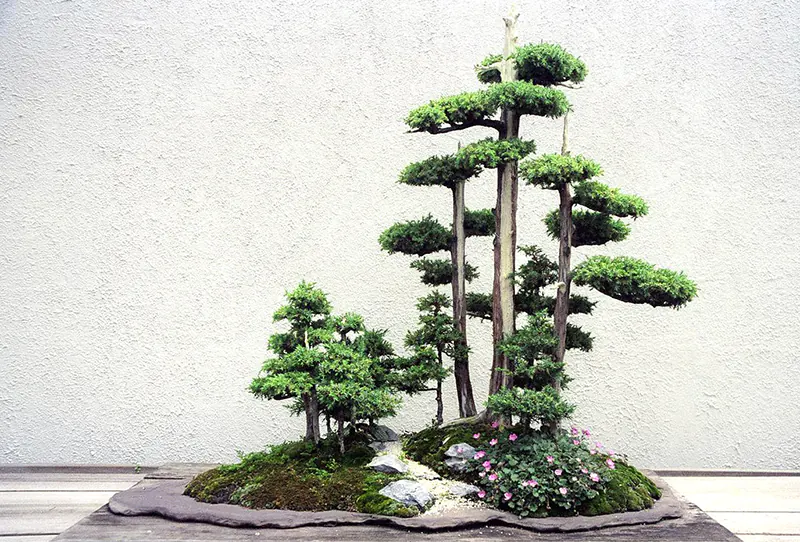Jin: What It Is and How Do You Achieve It?
The art of bonsai is precisely that – an artform. But unlike many other types of artistic expression, you’re dealing with a living element. As such, things might not always go according to plan. Your tree might decide to grow branches in areas you don’t prefer, or branches you love may die suddenly. While these situations can sometimes be a little unexpected or frustrating, they can also provide you with more opportunities for artistic expression.
In this article, we’ll be taking a closer look at the jin technique of creating deadwood in bonsai. We’ll be covering what it is, what it brings to the table, and how to achieve it in your bonsai.

What Is Jin In Bonsai?
Jin is a technique used to create beautiful deadwood on a bonsai. Using these techniques effectively can create interest in your tree and make it appear much older. Deadwood does occur in nature. When the elements, such as wind, rain, and lightning batter a tree, strong wind, and other factors strip the bark from branches or the trunk to expose the new wood, which then dries to create the deadwood.
The tree continues to live in many cases but shows these battle scars in beautifully aged wood. Deadwood is usually much lighter, gray to almost white, than the rest of the wood on the tree. This creates a beautiful contrast between the deadwood, living trunk and branches, and foliage.
Jin, in particular, is when bonsai artists remove the bark from the branches of the tree. This is often seen on the apex or upper branches of the tree – the parts that are most likely to be struck by lightning or battered by strong winds the most. Although, lower branches can also be jinned, if it makes sense for the style of your particular tree.
Creating deadwood on a bonsai takes a lot of practice to get right. We recommend practicing with younger, less valuable bonsai before attempting to create deadwood on your prized ones.
Jin Vs. Shari Vs. Uro
There are a few different techniques for creating deadwood in bonsai. The first and probably the most frequently seen is the Jin technique. As mentioned, with jinning, you remove the bark from the branches that you wish to transform into deadwood. Jin is especially useful in conifers such as Junipers and Spruce trees.
On the other hand, Shari is created on the trunk of the tree. In nature, this would occur when strong winds cause damage to the trunk resulting in large exposed wounds where the bark has been completely ripped off. In bonsai, this technique is best achieved by carving out the wound by hand, unless you buy a tree that’s already been wounded in this way.
Uro is a technique when you remove a branch completely, but instead of letting it heal over with limited scaring, you’ll make a hole where the branch used to be. Now, as the wound heals, it will create a scarred deadwood hollow in the area where the branch used to be. Uro is an excellent technique to use in deciduous trees.
Furthermore, there is also the Sabamiki technique, which is only for advanced bonsai masters. This technique opens up the wood so that you can see inside the trunk. Since this technique goes much deeper, you need a solid understanding of the tree’s nutrient flow to ensure you’re not cutting off the essential flow of nutrients.
Finally, there’s also the Tanuki technique, in which you use an existing piece of deadwood or driftwood. You’ll then make holes, divots, or ridges in which you can plant your living tree and mold it to the deadwood. This can give a dramatic effect without damaging the living tree.

Tools Needed To Create Deadwood
When it comes to the art of creating deadwood, there are a few tools you’ll need. We recommend using the right tools to avoid causing more damage to the tree and potentially killing it. Most of the tools you need will be readily available at bonsai stores, so you don’t have to worry that they’ll be difficult to find. The tools you need to create deadwood are:
- Jin pliers
- Carving tools
- Lime Sulfur
- Small brush
- Concave cutter
- Sandpaper
How To Achieve Jin In Bonsai?
Now that we’ve covered what jin is, it’s time to get into the steps of creating jin in your bonsai. Before we get started, take note that the best time to create deadwood on a bonsai is in early spring or late summer, as this is the time when your tree will recover from these wounds the fastest.
Step 1: Carefully Choose The Branches To Jin
As we mentioned, creating deadwood is an art in itself. You shouldn’t just go ahead and jin every single branch that breaks or that you want to remove. Take a look at your tree and choose the strategic branches to jin that will enhance the overall appearance of your bonsai. Also, bear balance in mind when choosing a branch to jin.
Step 2: Prepare Your Tools
Get the tools you need ready and ensure that they’ve been sterilized before use.
Step 3: Remove The Bark
If the branch you’ve decided to join is already broken, you can start to remove the bark using the jin pliers. If not, first use a regular shear to cut the branch sorter. With the jin pliers, grab the break at the end of the cut and, in a rolling motion, pull the bark back to expose the wood underneath. You may need to do this a few times to remove all the bark.
Step 4: Round Off The Edges
Once the wood has been exposed, you need to round off any sharp edges from the cut or break. In nature, the elements would have worn this away. In bonsai, we can use concave cutters or sandpaper to smooth the edges.
Step 5: Paint With Lime Sulfur
Once you’re happy with your jin, you lime sulfur and a brush and paint the exposed wood. The lime sulfur will seal the wood and harden it to keep the tree from contracting an illness or rotting.

Final Thoughts
Jin is a useful technique in bonsai to create visual interest and an older appearance. However, in spite of sounding easy, it can be challenging to get right and, in worse case scenarios, can cost you a tree if not done correctly. Practice makes perfect with this technique. So feel free to try it out on less valuable trainer bonsai or trees before attempting it on an established bonsai. Also, bear in mind that less is sometimes more.
At the end of the day, you want to use the deadwood to improve the overall appearance of your bonsai – not just creating deadwood with a little bit of life. Balance is essential.







